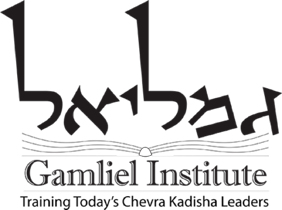A Reform Temple Trains For The Mitzvah Of Burying The Dead
by Robert Wiener
NJJN Staff Writer
When a dozen members of the Morris County Jewish community gather at Temple Shalom in Succasunna on Sunday, Feb. 22, they will take a major step in realizing a 20-year-old goal.
The participants in the gathering plan to establish a hevra kadisha, the volunteer burial society whose members wash and dress bodies in keeping with 2,000 years of religious tradition and, in this venue, a non-Orthodox orientation.
They will take eight hours of training in coping with death and dying and learning the prayers and rituals for handling the deceased, then visit a funeral parlor for hands-on training in preparing bodies for burial.
Three others hevra kadisha groups in the area are all associated with Orthodox congregations: Ahawas Achim B’nai Jacob and David in West Orange, the Jewish Educational Center in Elizabeth, and Congregation Beth Ephraim —Maplewood Jewish Center.
Intent on expanding the scope of the practice, volunteers from Adath Shalom, a Conservative congregation in Morris Plains, and Temple B’nai Or, a Reform synagogue in Morristown, will join in the training at Temple Shalom.
“It is a true mitzva,” said Rabbi Joel Soffin of Temple Shalom. “There is no reward for hevra kadisha. The people who participate have no ulterior motives.” It is relatively unusual for a Reform congregation to have its own hevra kadisha,” he said.
Sue Rosenthal, a member of the temple’s ritual committee, said her synagogue is “leading the way” in bringing such services to the non-Orthodox of Morris County.
“It says to the overall Jewish community that although we may be less observant than others, we can be very spiritual,” she said.
“I am very spiritual in nature,” continued Rosenthal, “and I’d like to let others in the congregation have similar opportunities.” To her, being part of a hevra kadisha “is the highest level of mitzvot.”
Soffin said he learned that feeling, too, when he participated in a hevra kadisha four years ago at a New York synagogue.
“I was reluctant. I thought I would feel faint. But I had no bad feelings at all. It was one of the holiest and most powerful experiences of my life. Everything was done in a thoughtful way, with enormous respect for the body of Nachum, the man we took care of.
“There was great respect for the body,” continued Soffin, “and when it was over ,we asked forgiveness for the things we might have done wrong. I had a deep sense that what we were doing was sacred.”
Instructing the group is David Zinner of Rockville, Md., who said he is prepared to help his students cope with anxieties about handling the dead. Zinner is executive director of Kavod v’Nichum (Honor and Comfort), an organization that provides technical assistance in all areas related to Jewish funeral and mourning practices.
“The sessions begin with talking about the participants’ various experiences with death and dying,” Zinner said. “It is important to be in touch with personal feelings” about the traditions of memorializing and burying a friend or family member.
The ritual begins with washing and purifying the body, which the class will simulate without water as its members learn “the appropriate prayers and means of handling the deceased with respect,” said Zinner.
“One way to overcome a person’s reluctance to have a hands-on experience with a dead body is to conjure up the joyful image of a washing the body of a newborn baby child,” he explained, suggesting a symmetry at the start and end of a person’s life.
“Sometimes we’ll borrow a mannequin from the Red Cross to work with, or preferably, one or more of the students will volunteer to act as the deceased.”
Zinner, who has played that role frequently, said, “To volunteer can be a very moving experience. It gives you a sense of comfort that you will be treated in a spiritual way after you do die. But for some people, it can be a near-death experience and quite startling.”
Once a model is in place, the students will be taught how to dress the body in simple white burial garments — a shirt, pants, jacket, belt, sheet, prayer shawl, and head covering. When that is completed, they will learn the proper method of lifting the body and placing it in a coffin.
“Finally, the participants are taught to ask forgiveness from the soul of the deceased for possibly violating the person’s body,” the teacher explained.
“I can’t say I’m not nervous,” Rosenthal confided. “But I believe it will not be something gory; it will be a moment of holiness.”
Robert Wiener can be reached at rwiener@njjewishnews.com.
Copyright 2003 New Jersey Jewish News. All rights reserved. For subscription information call 973.887.8500.

